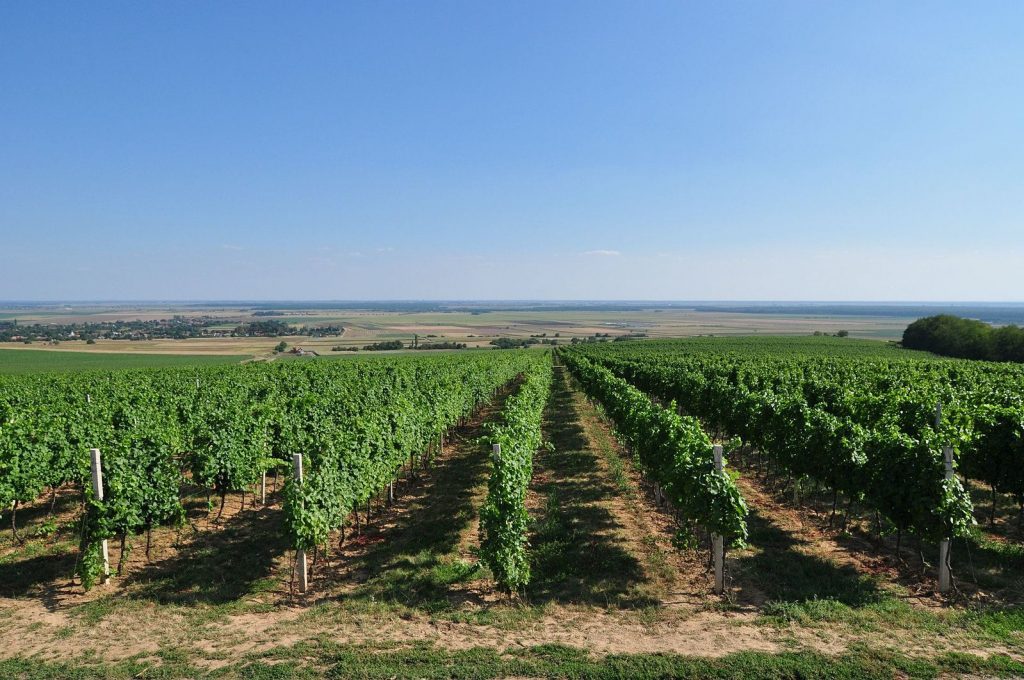Croatian Wine: Europe’s Hidden Gem
Don’t sleep on Croatian Wines while planning your next trip (even if it’s just a trip to the wine shop). These are some of the best Croatian wines that stand up to the overall best old world wines.
American travelers have flocked to Croatia in recent years in search of coastal havens, delicious food, and lively cities, discovering an ancient wine culture along the way.
More wine is being exported from Croatia now than ever before, so it’s a great time to learn about the wine-growing tradition, regions, grapes, and some bottles to watch for from this rising star of the wine world.
Croatia hugs the Adriatic Sea, mirroring Italy in its climate, beauty, and history. It’s the hidden gem of Europe, with unbelievably fresh seafood, mountains and beaches, and over 300 geographically-defined wine-producing regions boasting 2,400 years of experience.
While some of the regions or grapes may seem like pronunciation nightmares at first, digging into all that Croatia has to offer will soon put those concerns to rest.

Best Croatian Wines To Buy
Galić Graševina, Slavonia
Price: Under $10
Hailing from the wine-growing region of Kutjevo, the Galić family has produced wine for generations, largely for personal consumption. This small harvest of Graševina was fermented and aged in stainless steel, enhancing the gentle aromas of pineapple, young peaches, and fresh hay. Finishes with a spiciness characteristic of Graševina.
Where to buy this wine: Always ask your local wine shop, croatianpremiumwine.com, wine-searcher.com
Vina Skaramuča Plavac Mali, Dalmatia
Price: Under $40
Plavac Mali means ‘little blue’, an homage to the blue tint of the wine. Powerful and ripe with notes of dark cherries, peppers, vanilla, and coffee. Plavac Mali is the forefather of Zinfandel and Primitivo and pairs with food just as well as its younger counterparts: barbecue, hearty game dishes, and even seafood farewell with Plavac Mali.
Where to buy this wine: Always ask your local wine shop, wine.com, wine-searcher.com
Kozlović Malvazija, Istria
Price: Under $40
Growin in Western Istria on flysch, limestone, and clay. Medium-bodied with refreshing acidity, and Mediterranean salinity. Notes of herbs, white peaches, and lemon zest make this an excellent wine to drink young, however, it has the potential to age three or four years. Try with light seafood or spicy Asian cuisine.
Where to buy this wine: Always ask your local wine shop, wine-searcher.com
Korak Brut Nature, Uplands
Price: Under $30
This family-run estate is nestled in the hills near Zagreb, producing excellent wines since the early 1900s. More recently, they added sparkling wines to their repertoire, including this 100% Chardonnay brut nature boasting complex notes of crusty bread, minerality, and nuttiness among the persistent, fine bubbles. Dry with a long, creamy finish, this bottle easily rivals any other blanc de blanc of its class.
Where to buy this wine: Always ask your local wine shop, wine-searcher.com
Shop All Croatian Wines on Vivino.
Croatia’s Wine History
Bordering what is now Slovenia, Hungary, Serbia, Bosnia and Herzegovina, and Montenegro, Croatia has made wine through centuries of conquests and defeats by their neighbors and other cultures.
Documented examples of winemaking, including amphora and coins bearing depictions of grapes, have been discovered dating back to the 5th century. At various times, the Illyrians, the Thracians, and the Romans have documented producing wine in the islands as well as continental Croatia.
Winemaking largely ceased during the 16th and 17th centuries when the Ottoman Empire occupied parts of the country.
Like much of Europe, Croatia suffered the effects of phylloxera during the 19th century, ravaging many of Croatia’s indigenous varieties. With shifting political lines and the influence of the grapes of nearby Austria and Germany, Croatia could have lost its own winemaking identity entirely.
Thankfully, enterprising winemakers kept those unique varietals alive.
Communism took another toll on the region in the mid-20th century, when winemakers were required to produce bulk exports, which placed an emphasis on high-yield grapes. The introduction of Rhône varietals at this time can still be seen today.
In addition, private citizens could not own as much land legally as the larger, state-owned conglomerates. While this meant oppression and some amount of homogeny at the time, it led to a multitude of small family growers following the dissolution of Yugoslavia in 1991.
With acceptance into the EU in 2013, Croatia’s export of those ‘boutique’ wines has only been growing. However, that doesn’t mean it’s easy to find in the US – most exports go to those neighbors mentioned earlier, with small allocations making their way across the ocean.
Major Wine Regions of Croatia

There are over 300 wine-producing regions in the Balkan country, producing some 70 million liters annually. These hundreds of sub-regions are largely contained in four major zones: the Uplands, Slavonia, Dalmatia and the islands, and Istria.
The Uplands and Slavonia can be found in continental Croatia, whose mountainous climate is friendly for sparkling wine production and cool-weather grapes. Istria and Dalmatia, on the other hand, run along the Adriatic, boasting steep, coastal slopes and impressive sun exposure.
The Uplands and Slavonia
Considered continental Croatia, the Uplands abut the capital of Zagreb while Slavonia is surrounded by the Danube, Drava, and Sava rivers to the east.
The Uplands
The Uplands are characterized by their mountainous terrain that has suited Furmint, Riesling, and light reds like Pinot Noir very well. Cold winds from the Alps mingle with the heat of the Mediterranean to the south, creating a mild climate amongst its limestone soils.
While non-indigenous grapes are more popular in the Uplands, the native Kraljevina grape is experiencing a resurgence. Light and refreshing with high acid and low alcohol levels, Kraljevina is often blended with sparkling water by locals to make for an even more refreshing beverage called gemišt.
Sparkling wine production is popular on Mount Plešivica, on the border with Bosnia and Herzegovina. Kraljevina is often blended with other varietals to make world-class bubbly.
Slavonia
One of the most popular white wine grapes in Croatia, Graševina, thrives best in Slavonia but has found growing success throughout the country. It’s medium-bodied and aromatic, with a floral, fruity palate and crisp acidity.
If allowed to hang on the vines late into the season, it makes for excellent ice wine. You may see this grape referred to as Welchsriesling although it has no relation to Riesling.
Traminac, also known as Gewürztraminer, is also prolific in the flatter landscape of Slavonia.
Dalmatia and the Islands
In the far south of Croatia lies Dalmatia and a smattering of islands, including a UNESCO World Heritage Site. Stari Grad Plain on the island of Hvar is the oldest continuously cultivated vineyard in the world. Sunny and dry, Dalmatia largely produces full-bodied native wines in riper styles. A blend of hills and rugged coastline, the terroir of Dalmatia and the Islands varies greatly from vineyard to vineyard.
A variety of indigenous grapes can be found in this region, including Plavac Mali, a rich red backed with bold blackberry, dry fig, and dark cherry qualities. Other grapes include dry whites like Grk and Poslip as well as the rarely-exported Kujundzusa, a light, fresh, and slightly salty varietal with no known genetic link to any other grape.
Istria
Once part of Austria, Italy, and Yugoslavia before finally belonging to Croatia, the northern peninsula of Istria is a rich agricultural area with deep viticultural roots. A blend of coastal exposure and Alp influence, Istria boasts three main soil varieties:
- Red Istria: Found on the coast, it has high levels of iron with mainly red varietals planted
- Gray Istria: Mostly white grapes with balanced acid and prominent aromatics grow in this centrally-placed soil
- White Istria: Located at higher altitudes, this soil is peppered with limestone amongst the rocky terrain and is best suited for elegant, high-acid whites.
With so much socio-political trading throughout the centuries, many of the grapes grown in Istria hail from elsewhere: Cabernet Sauvignon, Gamay, Refosco, Chardonnay, Sauvignon Blanc, and so on. However, there are some native grapes. Teran, for example, is a full-bodied, fruity red with high acidity and robust tannins. You can also find Malvazija Istarska, the most widely planted grape in Istria, a white varietal that can be made in many different styles ranging from light and fresh to aged and complex.
Long Term Travel In Croatia?
Based on the wine alone, it’s easy to fall in love with Croatia. But there is oh so much more to love. So much that tons of Americans are traveling long-term in, and even moving to Croatia.
If you’re looking for a long-term stay in Croatia we found this awesome resource for living in Croatia as an expat. If you’re considering traveling for an extended time in the country, or potentially moving there for a while this guide has information on moving to and living in the second largest city, Split.
If you’re not quite ready to move, feel free to crack open a bottle of Galić Graševina and dream!









